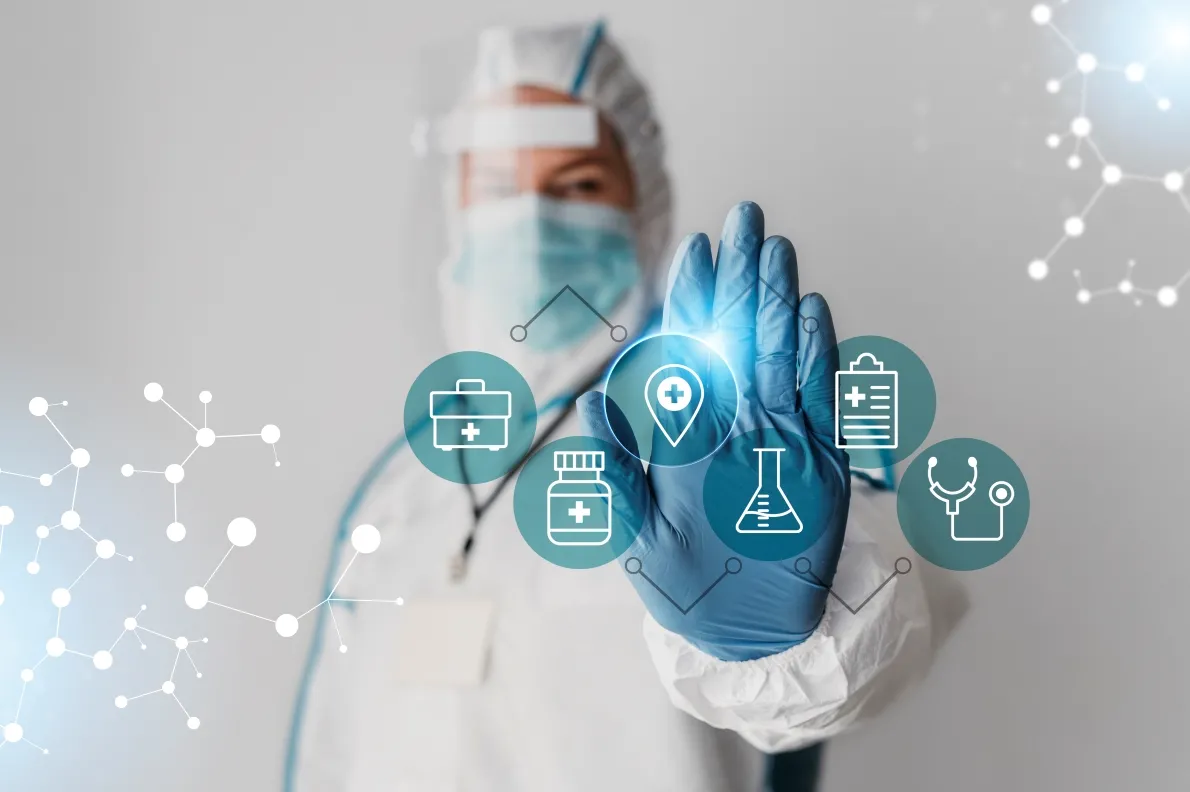Immuno-Oncology (I-O) is an innovative area of research that seeks to help the body's own immune system fight cancer. The goal is to address the unmet need for long-term survival in patients with advanced cancers.
The industry's leading producers are Bristol-Myers Squibb, Merck & Co and Roche AG, with revenues of 27.89%, 22.10% and 20.85%, respectively, in 2019.
This report is a detailed and comprehensive analysis for global Immuno-Oncology market. Both quantitative and qualitative analyses are presented by company, by region & country, by Type and by Application. As the market is constantly changing, this report explores the competition, supply and demand trends, as well as key factors that contribute to its changing demands across many markets. Company profiles and product examples of selected competitors, along with market share estimates of some of the selected leaders for the year 2023, are provided.
Key Features:
Global Immuno-Oncology market size and forecasts, in consumption value ($ Million), 2018-2029
Global Immuno-Oncology market size and forecasts by region and country, in consumption value ($ Million), 2018-2029
Global Immuno-Oncology market size and forecasts, by Type and by Application, in consumption value ($ Million), 2018-2029
Global Immuno-Oncology market shares of main players, in revenue ($ Million), 2018-2023
The Primary Objectives in This Report Are:
To determine the size of the total market opportunity of global and key countries
To assess the growth potential for Immuno-Oncology
To forecast future growth in each product and end-use market
To assess competitive factors affecting the marketplace
This report profiles key players in the global Immuno-Oncology market based on the following parameters - company overview, production, value, price, gross margin, product portfolio, geographical presence, and key developments.
This report also provides key insights about market drivers, restraints, opportunities, new product launches or approvals, COVID-19 and Russia-Ukraine War Influence.
Key Market Players
Bristol-Myers Squibb
Merck & Co., Inc.
Roche AG
AstraZeneca, Plc
Sanofi S.A.
Dendreon Pharmaceuticals
Novartis
Gilead Sciences Inc.
Merck KGaA
Segmentation By Type
Immune Checkpoint Inhibitors
Cytokine-Based Immunotherapy
Cancer Vaccines
CAR-T Cell Therapy
Others
Segmentation By Application
Hospitals
Drugstores
Others
Segmentation By Region
North America (United States, Canada, and Mexico)
Europe (Germany, France, UK, Russia, Italy, and Rest of Europe)
Asia-Pacific (China, Japan, South Korea, India, Southeast Asia, Australia and Rest of Asia-Pacific)
South America (Brazil, Argentina and Rest of South America)
Middle East & Africa (Turkey, Saudi Arabia, UAE, Rest of Middle East & Africa)
Market SWOT Analysis
What are the strengths of the Immuno-Oncology Market in 2025?
The immuno-oncology market in 2025 will continue to benefit from cutting-edge advancements in biotechnology and clinical research. The approval of novel immunotherapies and combination therapies will enhance treatment options, leading to better patient outcomes. Additionally, increased healthcare spending and growing investments in oncology research will further propel market growth.
What are the weaknesses of the Immuno-Oncology Market in 2025?
The high cost of immuno-oncology treatments remains a significant weakness, limiting accessibility, particularly in developing regions. Moreover, the risk of adverse side effects and the variability in patient response to immunotherapy can pose challenges to widespread adoption. The complexity of treatment regimens also adds to logistical hurdles in patient care.
What are the opportunities in the Immuno-Oncology Market in 2025?
There is a growing opportunity for the development of personalized immunotherapies, leveraging biomarkers and genomic data to tailor treatments. The expanding pipeline of immuno-oncology drugs, including those targeting rare cancers, offers a potential for market expansion. Additionally, collaborations between pharmaceutical companies and healthcare providers to improve accessibility can open up new avenues for growth.
What are the threats to the Immuno-Oncology Market in 2025?
The increasing competition from traditional cancer therapies and the development of targeted therapies could threaten the dominance of immuno-oncology treatments. Regulatory challenges, particularly in fast-tracking drug approvals and managing post-marketing surveillance, could pose barriers to timely market entry. Additionally, the possibility of unforeseen long-term side effects may impact patient trust and treatment uptake.
Market PESTEL Analysis
What are the political factors influencing the Immuno-Oncology Market in 2025?
Government policies regarding healthcare funding and reimbursement models play a crucial role in the accessibility of immuno-oncology therapies. Additionally, regulatory frameworks for drug approvals and global trade policies can impact the speed at which new therapies reach the market. Political stability in major markets like the U.S. and Europe also affects investment and collaboration opportunities.
What are the economic factors influencing the Immuno-Oncology Market in 2025?
The rising cost of cancer treatments remains a significant economic factor, particularly for immuno-oncology therapies, which can be expensive. Economic conditions, such as GDP growth, healthcare spending, and insurance coverage, directly impact the affordability and adoption of new therapies. There is also the potential for cost-saving innovations like biosimilars to alter market dynamics.
What are the social factors influencing the Immuno-Oncology Market in 2025?
Public awareness and the growing focus on cancer prevention and treatment significantly impact market growth. As patients demand more personalized and effective treatments, the shift towards immuno-oncology therapies will continue. Additionally, social acceptance and patient advocacy movements will push for better access to life-saving therapies, influencing healthcare policies.
What are the technological factors influencing the Immuno-Oncology Market in 2025?
Advances in biotechnology, genomic research, and personalized medicine are crucial drivers in immuno-oncology. The development of more precise biomarkers, advanced diagnostic tools, and improved drug delivery systems will enhance treatment outcomes. Continuous research into combination therapies and immunotherapy effectiveness also holds significant promise for expanding the market.
What are the environmental factors influencing the Immuno-Oncology Market in 2025?
Environmental sustainability is becoming an increasingly important consideration in drug manufacturing processes. The need for eco-friendly production and packaging methods, as well as the impact of climate change on global healthcare systems, could influence how immuno-oncology therapies are developed and distributed. There is also a focus on reducing the carbon footprint of healthcare industries globally.
What are the legal factors influencing the Immuno-Oncology Market in 2025?
The regulatory environment, including patent laws, intellectual property rights, and pricing regulations, will have a significant impact on the immuno-oncology market. Legal frameworks surrounding clinical trials, data protection, and patient safety are also critical to ensuring compliance and patient trust. Additionally, legal challenges related to access to medications in low-income regions can affect market penetration.
Market SIPOC Analysis
Who are the suppliers in the Immuno-Oncology Market in 2025?
Suppliers in the immuno-oncology market include pharmaceutical companies, biotechnology firms, and research institutions that provide raw materials, innovative drugs, and therapeutic technologies. Additionally, contract manufacturing organizations (CMOs) and technology providers for diagnostic tools contribute essential components for immuno-oncology treatments.
What are the inputs in the Immuno-Oncology Market in 2025?
The inputs in the immuno-oncology market consist of research and development (R&D) investment, clinical trial data, regulatory approvals, and novel immunotherapy compounds. Advanced technologies in genomics, diagnostics, and biomarker discovery also serve as critical inputs to fuel drug development and personalized treatments.
What are the processes in the Immuno-Oncology Market in 2025?
Processes in the immuno-oncology market include the discovery and development of new immunotherapies, conducting clinical trials, obtaining regulatory approval, and manufacturing. Marketing, distribution, and post-market surveillance are also integral steps to ensure effective patient access and long-term therapy success.
Who are the customers in the Immuno-Oncology Market in 2025?
Customers in the immuno-oncology market include healthcare providers, hospitals, oncologists, and clinics that administer treatments. Additionally, patients suffering from various types of cancers are the direct end-users, while healthcare systems, insurance providers, and government health agencies also play a role in the distribution and reimbursement processes.
What are the outputs in the Immuno-Oncology Market in 2025?
The outputs in the immuno-oncology market include new and approved immuno-oncology drugs and therapies, clinical outcomes data, and personalized treatment plans for patients. Other outputs include scientific publications, healthcare solutions for improved cancer care, and long-term patient survival statistics.
Market Porter's Five Forces
What is the threat of new entrants in the Immuno-Oncology Market in 2025?
The threat of new entrants in the immuno-oncology market is moderate. While high entry barriers exist due to the significant capital investment required for research, clinical trials, and regulatory approval, new companies with innovative technologies or strategic collaborations could still make inroads. However, the market remains competitive, with established players holding strong brand recognition and research pipelines.
What is the bargaining power of suppliers in the Immuno-Oncology Market in 2025?
The bargaining power of suppliers is relatively high. Suppliers of raw materials, specialized biotechnology, and advanced diagnostic tools have significant leverage due to the complexity and specificity of immuno-oncology products. Additionally, companies that provide cutting-edge research data and drug manufacturing services hold substantial power in this evolving market.
What is the bargaining power of buyers in the Immuno-Oncology Market in 2025?
The bargaining power of buyers is moderate to low. Although patients and healthcare providers seek cost-effective treatment options, the highly specialized nature of immuno-oncology therapies limits choices. The growing demand for personalized and innovative cancer treatments gives pharmaceutical companies considerable influence over pricing and availability, though healthcare providers and payers may negotiate on pricing.
What is the threat of substitute products or services in the Immuno-Oncology Market in 2025?
The threat of substitutes in the immuno-oncology market is moderate. While traditional treatments like chemotherapy, radiotherapy, and surgery remain key options for cancer treatment, immuno-oncology therapies offer targeted, potentially more effective treatments. However, the continued development of targeted therapies and other forms of cancer immunotherapy can present competition to current offerings.
What is the intensity of competitive rivalry in the Immuno-Oncology Market in 2025?
The intensity of competitive rivalry in the immuno-oncology market is high. The market is populated with large pharmaceutical companies and emerging biotech firms working on similar treatments and innovative drug combinations. Ongoing research and development, regulatory approvals, and clinical trial successes are key factors driving competition, as companies race to capture market share in an increasingly lucrative field.
Market Upstream Analysis
What are the key upstream drivers in the Immuno-Oncology Market in 2025?
The key upstream drivers include advancements in biotechnology, genomics, and immunology, which enable the development of novel immunotherapies. Increased investment in cancer research, along with collaboration between academia, biotech firms, and pharmaceutical companies, further accelerates the innovation pipeline. Regulatory changes aimed at streamlining drug approvals also play a significant role.
What are the main suppliers of raw materials and technologies in the Immuno-Oncology Market in 2025?
Suppliers of raw materials and technologies in the immuno-oncology market include biotechnology companies that provide advanced therapeutic agents, monoclonal antibodies, and biologics. Contract manufacturing organizations (CMOs) are crucial for producing complex biologics at scale. Additionally, diagnostic technology firms supplying tools for biomarker identification and personalized treatment also contribute to the supply chain.
What challenges are faced by suppliers in the Immuno-Oncology Market in 2025?
Suppliers face challenges such as the high cost of raw materials for biologics production, the complexity of maintaining supply chain reliability, and regulatory hurdles in meeting global quality standards. There is also the challenge of addressing the demand for faster clinical trial processes and the need for precision in drug manufacturing, which adds operational complexity.
What impact do upstream research and development activities have on the Immuno-Oncology Market in 2025?
Upstream R&D activities are critical in shaping the immuno-oncology market. The progress made in understanding immune system pathways, cancer genomics, and tumor microenvironments is driving the development of more targeted therapies. These R&D advancements result in improved treatment options, increasing the market’s potential, and accelerating time-to-market for new therapies.
Market Midstream Analysis
What are the key midstream activities in the Immuno-Oncology Market in 2025?
Key midstream activities include the development and testing of immuno-oncology therapies through clinical trials. This stage involves collaboration between pharmaceutical companies, healthcare providers, and clinical research organizations to conduct trials, gather data, and refine treatments. Additionally, the manufacturing and scaling of successful therapies for commercialization also take place in this phase.
What role do clinical trials play in the Immuno-Oncology Market in 2025?
Clinical trials are essential to the midstream process as they validate the safety, efficacy, and potential of immuno-oncology drugs. The successful completion of clinical trials enables therapies to gain regulatory approval and reach the market. Trials also help refine dosing strategies, identify patient populations most likely to benefit, and improve overall treatment regimens.
What are the challenges in the midstream process for Immuno-Oncology in 2025?
Challenges in the midstream process include the complexity of conducting large-scale, multi-center clinical trials that require significant resources and time. Regulatory delays or changes in guidelines can slow down the approval process. Additionally, ensuring the scalability of manufacturing processes while maintaining high standards of quality is a constant challenge.
How does collaboration impact the midstream activities of the Immuno-Oncology Market in 2025?
Collaboration between pharmaceutical companies, biotech firms, and academic institutions is crucial for midstream success. These partnerships help to pool expertise, share resources, and accelerate the development of new therapies. Collaborative efforts also enable more robust clinical trials and faster entry into the market, benefiting all stakeholders involved.
Market Downstream Analysis
What are the key downstream activities in the Immuno-Oncology Market in 2025?
Key downstream activities include the distribution, marketing, and commercialization of approved immuno-oncology therapies. This phase also involves post-market surveillance to monitor treatment outcomes, adverse reactions, and long-term effectiveness. Additionally, patient education and healthcare provider training are crucial for ensuring the successful adoption of new therapies.
How does commercialization affect the Immuno-Oncology Market in 2025?
Commercialization is a critical step in bringing immuno-oncology therapies to a wide patient base. Effective marketing strategies, including collaboration with healthcare providers and payers, ensure that these therapies are accessible. The market success of immuno-oncology drugs depends on pricing, reimbursement, and how well the therapies integrate into existing treatment protocols.
What challenges do companies face in the downstream phase of the Immuno-Oncology Market in 2025?
Companies face challenges such as navigating complex reimbursement and pricing models, particularly with high-cost immuno-oncology therapies. There is also the challenge of ensuring consistent supply and meeting patient demand. Additionally, educating both healthcare providers and patients about new immunotherapies requires significant resources and effective communication.
What role does patient access play in the downstream process of Immuno-Oncology in 2025?
Patient access is critical to the downstream process. Ensuring that immuno-oncology therapies are affordable and covered by insurance is essential for market penetration. Patient support programs, assistance with navigating insurance claims, and providing financial aid are also vital components for improving access and adherence to treatment regimens.
Chapter 1, to describe Immuno-Oncology product scope, market overview, market estimation caveats and base year.
Chapter 2, to profile the top players of Immuno-Oncology, with revenue, gross margin and global market share of Immuno-Oncology from 2018 to 2023.
Chapter 3, the Immuno-Oncology competitive situation, revenue and global market share of top players are analyzed emphatically by landscape contrast.
Chapter 4 and 5, to segment the market size by Type and application, with consumption value and growth rate by Type, application, from 2018 to 2029.
Chapter 6, 7, 8, 9, and 10, to break the market size data at the country level, with revenue and market share for key countries in the world, from 2018 to 2023.and Immuno-Oncology market forecast, by regions, type and application, with consumption value, from 2024 to 2029.
Chapter 11, market dynamics, drivers, restraints, trends, Porters Five Forces analysis, and Influence of COVID-19 and Russia-Ukraine War
Chapter 12, the key raw materials and key suppliers, and industry chain of Immuno-Oncology.
Chapter 13, to describe Immuno-Oncology research findings and conclusion.
1 Market Overview
1.1 Product Overview and Scope of Immuno-Oncology
1.2 Market Estimation Caveats and Base Year
1.3 Classification of Immuno-Oncology by Type
1.3.1 Overview: Global Immuno-Oncology Market Size by Type: 2018 Versus 2022 Versus 2029
1.3.2 Global Immuno-Oncology Consumption Value Market Share by Type in 2022
1.3.3 Immune Checkpoint Inhibitors
1.3.4 Cytokine-Based Immunotherapy
1.3.5 Cancer Vaccines
1.3.6 CAR-T Cell Therapy
1.3.7 Others
1.4 Global Immuno-Oncology Market by Application
1.4.1 Overview: Global Immuno-Oncology Market Size by Application: 2018 Versus 2022 Versus 2029
1.4.2 Hospitals
1.4.3 Drugstores
1.4.4 Others
1.5 Global Immuno-Oncology Market Size & Forecast
1.6 Global Immuno-Oncology Market Size and Forecast by Region
1.6.1 Global Immuno-Oncology Market Size by Region: 2018 VS 2022 VS 2029
1.6.2 Global Immuno-Oncology Market Size by Region, (2018-2029)
1.6.3 North America Immuno-Oncology Market Size and Prospect (2018-2029)
1.6.4 Europe Immuno-Oncology Market Size and Prospect (2018-2029)
1.6.5 Asia-Pacific Immuno-Oncology Market Size and Prospect (2018-2029)
1.6.6 South America Immuno-Oncology Market Size and Prospect (2018-2029)
1.6.7 Middle East and Africa Immuno-Oncology Market Size and Prospect (2018-2029)
2 Company Profiles
2.1 Bristol-Myers Squibb
2.1.1 Bristol-Myers Squibb Details
2.1.2 Bristol-Myers Squibb Major Business
2.1.3 Bristol-Myers Squibb Immuno-Oncology Product and Solutions
2.1.4 Bristol-Myers Squibb Immuno-Oncology Revenue, Gross Margin and Market Share (2018-2023)
2.1.5 Bristol-Myers Squibb Recent Developments and Future Plans
2.2 Merck & Co., Inc.
2.2.1 Merck & Co., Inc. Details
2.2.2 Merck & Co., Inc. Major Business
2.2.3 Merck & Co., Inc. Immuno-Oncology Product and Solutions
2.2.4 Merck & Co., Inc. Immuno-Oncology Revenue, Gross Margin and Market Share (2018-2023)
2.2.5 Merck & Co., Inc. Recent Developments and Future Plans
2.3 Roche AG
2.3.1 Roche AG Details
2.3.2 Roche AG Major Business
2.3.3 Roche AG Immuno-Oncology Product and Solutions
2.3.4 Roche AG Immuno-Oncology Revenue, Gross Margin and Market Share (2018-2023)
2.3.5 Roche AG Recent Developments and Future Plans
2.4 AstraZeneca, Plc
2.4.1 AstraZeneca, Plc Details
2.4.2 AstraZeneca, Plc Major Business
2.4.3 AstraZeneca, Plc Immuno-Oncology Product and Solutions
2.4.4 AstraZeneca, Plc Immuno-Oncology Revenue, Gross Margin and Market Share (2018-2023)
2.4.5 AstraZeneca, Plc Recent Developments and Future Plans
2.5 Sanofi S.A.
2.5.1 Sanofi S.A. Details
2.5.2 Sanofi S.A. Major Business
2.5.3 Sanofi S.A. Immuno-Oncology Product and Solutions
2.5.4 Sanofi S.A. Immuno-Oncology Revenue, Gross Margin and Market Share (2018-2023)
2.5.5 Sanofi S.A. Recent Developments and Future Plans
2.6 Dendreon Pharmaceuticals
2.6.1 Dendreon Pharmaceuticals Details
2.6.2 Dendreon Pharmaceuticals Major Business
2.6.3 Dendreon Pharmaceuticals Immuno-Oncology Product and Solutions
2.6.4 Dendreon Pharmaceuticals Immuno-Oncology Revenue, Gross Margin and Market Share (2018-2023)
2.6.5 Dendreon Pharmaceuticals Recent Developments and Future Plans
2.7 Novartis
2.7.1 Novartis Details
2.7.2 Novartis Major Business
2.7.3 Novartis Immuno-Oncology Product and Solutions
2.7.4 Novartis Immuno-Oncology Revenue, Gross Margin and Market Share (2018-2023)
2.7.5 Novartis Recent Developments and Future Plans
2.8 Gilead Sciences Inc.
2.8.1 Gilead Sciences Inc. Details
2.8.2 Gilead Sciences Inc. Major Business
2.8.3 Gilead Sciences Inc. Immuno-Oncology Product and Solutions
2.8.4 Gilead Sciences Inc. Immuno-Oncology Revenue, Gross Margin and Market Share (2018-2023)
2.8.5 Gilead Sciences Inc. Recent Developments and Future Plans
2.9 Merck KGaA
2.9.1 Merck KGaA Details
2.9.2 Merck KGaA Major Business
2.9.3 Merck KGaA Immuno-Oncology Product and Solutions
2.9.4 Merck KGaA Immuno-Oncology Revenue, Gross Margin and Market Share (2018-2023)
2.9.5 Merck KGaA Recent Developments and Future Plans
3 Market Competition, by Players
3.1 Global Immuno-Oncology Revenue and Share by Players (2018-2023)
3.2 Market Share Analysis (2022)
3.2.1 Market Share of Immuno-Oncology by Company Revenue
3.2.2 Top 3 Immuno-Oncology Players Market Share in 2022
3.2.3 Top 6 Immuno-Oncology Players Market Share in 2022
3.3 Immuno-Oncology Market: Overall Company Footprint Analysis
3.3.1 Immuno-Oncology Market: Region Footprint
3.3.2 Immuno-Oncology Market: Company Product Type Footprint
3.3.3 Immuno-Oncology Market: Company Product Application Footprint
3.4 New Market Entrants and Barriers to Market Entry
3.5 Mergers, Acquisition, Agreements, and Collaborations
4 Market Size Segment by Type
4.1 Global Immuno-Oncology Consumption Value and Market Share by Type (2018-2023)
4.2 Global Immuno-Oncology Market Forecast by Type (2024-2029)
5 Market Size Segment by Application
5.1 Global Immuno-Oncology Consumption Value Market Share by Application (2018-2023)
5.2 Global Immuno-Oncology Market Forecast by Application (2024-2029)
6 North America
6.1 North America Immuno-Oncology Consumption Value by Type (2018-2029)
6.2 North America Immuno-Oncology Consumption Value by Application (2018-2029)
6.3 North America Immuno-Oncology Market Size by Country
6.3.1 North America Immuno-Oncology Consumption Value by Country (2018-2029)
6.3.2 United States Immuno-Oncology Market Size and Forecast (2018-2029)
6.3.3 Canada Immuno-Oncology Market Size and Forecast (2018-2029)
6.3.4 Mexico Immuno-Oncology Market Size and Forecast (2018-2029)
7 Europe
7.1 Europe Immuno-Oncology Consumption Value by Type (2018-2029)
7.2 Europe Immuno-Oncology Consumption Value by Application (2018-2029)
7.3 Europe Immuno-Oncology Market Size by Country
7.3.1 Europe Immuno-Oncology Consumption Value by Country (2018-2029)
7.3.2 Germany Immuno-Oncology Market Size and Forecast (2018-2029)
7.3.3 France Immuno-Oncology Market Size and Forecast (2018-2029)
7.3.4 United Kingdom Immuno-Oncology Market Size and Forecast (2018-2029)
7.3.5 Russia Immuno-Oncology Market Size and Forecast (2018-2029)
7.3.6 Italy Immuno-Oncology Market Size and Forecast (2018-2029)
8 Asia-Pacific
8.1 Asia-Pacific Immuno-Oncology Consumption Value by Type (2018-2029)
8.2 Asia-Pacific Immuno-Oncology Consumption Value by Application (2018-2029)
8.3 Asia-Pacific Immuno-Oncology Market Size by Region
8.3.1 Asia-Pacific Immuno-Oncology Consumption Value by Region (2018-2029)
8.3.2 China Immuno-Oncology Market Size and Forecast (2018-2029)
8.3.3 Japan Immuno-Oncology Market Size and Forecast (2018-2029)
8.3.4 South Korea Immuno-Oncology Market Size and Forecast (2018-2029)
8.3.5 India Immuno-Oncology Market Size and Forecast (2018-2029)
8.3.6 Southeast Asia Immuno-Oncology Market Size and Forecast (2018-2029)
8.3.7 Australia Immuno-Oncology Market Size and Forecast (2018-2029)
9 South America
9.1 South America Immuno-Oncology Consumption Value by Type (2018-2029)
9.2 South America Immuno-Oncology Consumption Value by Application (2018-2029)
9.3 South America Immuno-Oncology Market Size by Country
9.3.1 South America Immuno-Oncology Consumption Value by Country (2018-2029)
9.3.2 Brazil Immuno-Oncology Market Size and Forecast (2018-2029)
9.3.3 Argentina Immuno-Oncology Market Size and Forecast (2018-2029)
10 Middle East & Africa
10.1 Middle East & Africa Immuno-Oncology Consumption Value by Type (2018-2029)
10.2 Middle East & Africa Immuno-Oncology Consumption Value by Application (2018-2029)
10.3 Middle East & Africa Immuno-Oncology Market Size by Country
10.3.1 Middle East & Africa Immuno-Oncology Consumption Value by Country (2018-2029)
10.3.2 Turkey Immuno-Oncology Market Size and Forecast (2018-2029)
10.3.3 Saudi Arabia Immuno-Oncology Market Size and Forecast (2018-2029)
10.3.4 UAE Immuno-Oncology Market Size and Forecast (2018-2029)
11 Market Dynamics
11.1 Immuno-Oncology Market Drivers
11.2 Immuno-Oncology Market Restraints
11.3 Immuno-Oncology Trends Analysis
11.4 Porters Five Forces Analysis
11.4.1 Threat of New Entrants
11.4.2 Bargaining Power of Suppliers
11.4.3 Bargaining Power of Buyers
11.4.4 Threat of Substitutes
11.4.5 Competitive Rivalry
11.5 Influence of COVID-19 and Russia-Ukraine War
11.5.1 Influence of COVID-19
11.5.2 Influence of Russia-Ukraine War
12 Industry Chain Analysis
12.1 Immuno-Oncology Industry Chain
12.2 Immuno-Oncology Upstream Analysis
12.3 Immuno-Oncology Midstream Analysis
12.4 Immuno-Oncology Downstream Analysis
13 Research Findings and Conclusion
14 Appendix
14.1 Methodology
14.2 Research Process and Data Source
14.3 Disclaimer
List of Tables
Table 1. Global Immuno-Oncology Consumption Value by Type, (USD Million), 2018 & 2022 & 2029
Table 2. Global Immuno-Oncology Consumption Value by Application, (USD Million), 2018 & 2022 & 2029
Table 3. Global Immuno-Oncology Consumption Value by Region (2018-2023) & (USD Million)
Table 4. Global Immuno-Oncology Consumption Value by Region (2024-2029) & (USD Million)
Table 5. Bristol-Myers Squibb Company Information, Head Office, and Major Competitors
Table 6. Bristol-Myers Squibb Major Business
Table 7. Bristol-Myers Squibb Immuno-Oncology Product and Solutions
Table 8. Bristol-Myers Squibb Immuno-Oncology Revenue (USD Million), Gross Margin and Market Share (2018-2023)
Table 9. Bristol-Myers Squibb Recent Developments and Future Plans
Table 10. Merck & Co., Inc. Company Information, Head Office, and Major Competitors
Table 11. Merck & Co., Inc. Major Business
Table 12. Merck & Co., Inc. Immuno-Oncology Product and Solutions
Table 13. Merck & Co., Inc. Immuno-Oncology Revenue (USD Million), Gross Margin and Market Share (2018-2023)
Table 14. Merck & Co., Inc. Recent Developments and Future Plans
Table 15. Roche AG Company Information, Head Office, and Major Competitors
Table 16. Roche AG Major Business
Table 17. Roche AG Immuno-Oncology Product and Solutions
Table 18. Roche AG Immuno-Oncology Revenue (USD Million), Gross Margin and Market Share (2018-2023)
Table 19. Roche AG Recent Developments and Future Plans
Table 20. AstraZeneca, Plc Company Information, Head Office, and Major Competitors
Table 21. AstraZeneca, Plc Major Business
Table 22. AstraZeneca, Plc Immuno-Oncology Product and Solutions
Table 23. AstraZeneca, Plc Immuno-Oncology Revenue (USD Million), Gross Margin and Market Share (2018-2023)
Table 24. AstraZeneca, Plc Recent Developments and Future Plans
Table 25. Sanofi S.A. Company Information, Head Office, and Major Competitors
Table 26. Sanofi S.A. Major Business
Table 27. Sanofi S.A. Immuno-Oncology Product and Solutions
Table 28. Sanofi S.A. Immuno-Oncology Revenue (USD Million), Gross Margin and Market Share (2018-2023)
Table 29. Sanofi S.A. Recent Developments and Future Plans
Table 30. Dendreon Pharmaceuticals Company Information, Head Office, and Major Competitors
Table 31. Dendreon Pharmaceuticals Major Business
Table 32. Dendreon Pharmaceuticals Immuno-Oncology Product and Solutions
Table 33. Dendreon Pharmaceuticals Immuno-Oncology Revenue (USD Million), Gross Margin and Market Share (2018-2023)
Table 34. Dendreon Pharmaceuticals Recent Developments and Future Plans
Table 35. Novartis Company Information, Head Office, and Major Competitors
Table 36. Novartis Major Business
Table 37. Novartis Immuno-Oncology Product and Solutions
Table 38. Novartis Immuno-Oncology Revenue (USD Million), Gross Margin and Market Share (2018-2023)
Table 39. Novartis Recent Developments and Future Plans
Table 40. Gilead Sciences Inc. Company Information, Head Office, and Major Competitors
Table 41. Gilead Sciences Inc. Major Business
Table 42. Gilead Sciences Inc. Immuno-Oncology Product and Solutions
Table 43. Gilead Sciences Inc. Immuno-Oncology Revenue (USD Million), Gross Margin and Market Share (2018-2023)
Table 44. Gilead Sciences Inc. Recent Developments and Future Plans
Table 45. Merck KGaA Company Information, Head Office, and Major Competitors
Table 46. Merck KGaA Major Business
Table 47. Merck KGaA Immuno-Oncology Product and Solutions
Table 48. Merck KGaA Immuno-Oncology Revenue (USD Million), Gross Margin and Market Share (2018-2023)
Table 49. Merck KGaA Recent Developments and Future Plans
Table 50. Global Immuno-Oncology Revenue (USD Million) by Players (2018-2023)
Table 51. Global Immuno-Oncology Revenue Share by Players (2018-2023)
Table 52. Breakdown of Immuno-Oncology by Company Type (Tier 1, Tier 2, and Tier 3)
Table 53. Market Position of Players in Immuno-Oncology, (Tier 1, Tier 2, and Tier 3), Based on Revenue in 2022
Table 54. Head Office of Key Immuno-Oncology Players
Table 55. Immuno-Oncology Market: Company Product Type Footprint
Table 56. Immuno-Oncology Market: Company Product Application Footprint
Table 57. Immuno-Oncology New Market Entrants and Barriers to Market Entry
Table 58. Immuno-Oncology Mergers, Acquisition, Agreements, and Collaborations
Table 59. Global Immuno-Oncology Consumption Value (USD Million) by Type (2018-2023)
Table 60. Global Immuno-Oncology Consumption Value Share by Type (2018-2023)
Table 61. Global Immuno-Oncology Consumption Value Forecast by Type (2024-2029)
Table 62. Global Immuno-Oncology Consumption Value by Application (2018-2023)
Table 63. Global Immuno-Oncology Consumption Value Forecast by Application (2024-2029)
Table 64. North America Immuno-Oncology Consumption Value by Type (2018-2023) & (USD Million)
Table 65. North America Immuno-Oncology Consumption Value by Type (2024-2029) & (USD Million)
Table 66. North America Immuno-Oncology Consumption Value by Application (2018-2023) & (USD Million)
Table 67. North America Immuno-Oncology Consumption Value by Application (2024-2029) & (USD Million)
Table 68. North America Immuno-Oncology Consumption Value by Country (2018-2023) & (USD Million)
Table 69. North America Immuno-Oncology Consumption Value by Country (2024-2029) & (USD Million)
Table 70. Europe Immuno-Oncology Consumption Value by Type (2018-2023) & (USD Million)
Table 71. Europe Immuno-Oncology Consumption Value by Type (2024-2029) & (USD Million)
Table 72. Europe Immuno-Oncology Consumption Value by Application (2018-2023) & (USD Million)
Table 73. Europe Immuno-Oncology Consumption Value by Application (2024-2029) & (USD Million)
Table 74. Europe Immuno-Oncology Consumption Value by Country (2018-2023) & (USD Million)
Table 75. Europe Immuno-Oncology Consumption Value by Country (2024-2029) & (USD Million)
Table 76. Asia-Pacific Immuno-Oncology Consumption Value by Type (2018-2023) & (USD Million)
Table 77. Asia-Pacific Immuno-Oncology Consumption Value by Type (2024-2029) & (USD Million)
Table 78. Asia-Pacific Immuno-Oncology Consumption Value by Application (2018-2023) & (USD Million)
Table 79. Asia-Pacific Immuno-Oncology Consumption Value by Application (2024-2029) & (USD Million)
Table 80. Asia-Pacific Immuno-Oncology Consumption Value by Region (2018-2023) & (USD Million)
Table 81. Asia-Pacific Immuno-Oncology Consumption Value by Region (2024-2029) & (USD Million)
Table 82. South America Immuno-Oncology Consumption Value by Type (2018-2023) & (USD Million)
Table 83. South America Immuno-Oncology Consumption Value by Type (2024-2029) & (USD Million)
Table 84. South America Immuno-Oncology Consumption Value by Application (2018-2023) & (USD Million)
Table 85. South America Immuno-Oncology Consumption Value by Application (2024-2029) & (USD Million)
Table 86. South America Immuno-Oncology Consumption Value by Country (2018-2023) & (USD Million)
Table 87. South America Immuno-Oncology Consumption Value by Country (2024-2029) & (USD Million)
Table 88. Middle East & Africa Immuno-Oncology Consumption Value by Type (2018-2023) & (USD Million)
Table 89. Middle East & Africa Immuno-Oncology Consumption Value by Type (2024-2029) & (USD Million)
Table 90. Middle East & Africa Immuno-Oncology Consumption Value by Application (2018-2023) & (USD Million)
Table 91. Middle East & Africa Immuno-Oncology Consumption Value by Application (2024-2029) & (USD Million)
Table 92. Middle East & Africa Immuno-Oncology Consumption Value by Country (2018-2023) & (USD Million)
Table 93. Middle East & Africa Immuno-Oncology Consumption Value by Country (2024-2029) & (USD Million)
Table 94. Immuno-Oncology Raw Material
Table 95. Key Suppliers of Immuno-Oncology Raw Materials
List of Figures
Figure 1. Immuno-Oncology Picture
Figure 2. Global Immuno-Oncology Consumption Value by Type, (USD Million), 2018 & 2022 & 2029
Figure 3. Global Immuno-Oncology Consumption Value Market Share by Type in 2022
Figure 4. Immune Checkpoint Inhibitors
Figure 5. Cytokine-Based Immunotherapy
Figure 6. Cancer Vaccines
Figure 7. CAR-T Cell Therapy
Figure 8. Others
Figure 9. Global Immuno-Oncology Consumption Value by Type, (USD Million), 2018 & 2022 & 2029
Figure 10. Immuno-Oncology Consumption Value Market Share by Application in 2022
Figure 11. Hospitals Picture
Figure 12. Drugstores Picture
Figure 13. Others Picture
Figure 14. Global Immuno-Oncology Consumption Value, (USD Million): 2018 & 2022 & 2029
Figure 15. Global Immuno-Oncology Consumption Value and Forecast (2018-2029) & (USD Million)
Figure 16. Global Market Immuno-Oncology Consumption Value (USD Million) Comparison by Region (2018 & 2022 & 2029)
Figure 17. Global Immuno-Oncology Consumption Value Market Share by Region (2018-2029)
Figure 18. Global Immuno-Oncology Consumption Value Market Share by Region in 2022
Figure 19. North America Immuno-Oncology Consumption Value (2018-2029) & (USD Million)
Figure 20. Europe Immuno-Oncology Consumption Value (2018-2029) & (USD Million)
Figure 21. Asia-Pacific Immuno-Oncology Consumption Value (2018-2029) & (USD Million)
Figure 22. South America Immuno-Oncology Consumption Value (2018-2029) & (USD Million)
Figure 23. Middle East and Africa Immuno-Oncology Consumption Value (2018-2029) & (USD Million)
Figure 24. Global Immuno-Oncology Revenue Share by Players in 2022
Figure 25. Immuno-Oncology Market Share by Company Type (Tier 1, Tier 2 and Tier 3) in 2022
Figure 26. Global Top 3 Players Immuno-Oncology Market Share in 2022
Figure 27. Global Top 6 Players Immuno-Oncology Market Share in 2022
Figure 28. Global Immuno-Oncology Consumption Value Share by Type (2018-2023)
Figure 29. Global Immuno-Oncology Market Share Forecast by Type (2024-2029)
Figure 30. Global Immuno-Oncology Consumption Value Share by Application (2018-2023)
Figure 31. Global Immuno-Oncology Market Share Forecast by Application (2024-2029)
Figure 32. North America Immuno-Oncology Consumption Value Market Share by Type (2018-2029)
Figure 33. North America Immuno-Oncology Consumption Value Market Share by Application (2018-2029)
Figure 34. North America Immuno-Oncology Consumption Value Market Share by Country (2018-2029)
Figure 35. United States Immuno-Oncology Consumption Value (2018-2029) & (USD Million)
Figure 36. Canada Immuno-Oncology Consumption Value (2018-2029) & (USD Million)
Figure 37. Mexico Immuno-Oncology Consumption Value (2018-2029) & (USD Million)
Figure 38. Europe Immuno-Oncology Consumption Value Market Share by Type (2018-2029)
Figure 39. Europe Immuno-Oncology Consumption Value Market Share by Application (2018-2029)
Figure 40. Europe Immuno-Oncology Consumption Value Market Share by Country (2018-2029)
Figure 41. Germany Immuno-Oncology Consumption Value (2018-2029) & (USD Million)
Figure 42. France Immuno-Oncology Consumption Value (2018-2029) & (USD Million)
Figure 43. United Kingdom Immuno-Oncology Consumption Value (2018-2029) & (USD Million)
Figure 44. Russia Immuno-Oncology Consumption Value (2018-2029) & (USD Million)
Figure 45. Italy Immuno-Oncology Consumption Value (2018-2029) & (USD Million)
Figure 46. Asia-Pacific Immuno-Oncology Consumption Value Market Share by Type (2018-2029)
Figure 47. Asia-Pacific Immuno-Oncology Consumption Value Market Share by Application (2018-2029)
Figure 48. Asia-Pacific Immuno-Oncology Consumption Value Market Share by Region (2018-2029)
Figure 49. China Immuno-Oncology Consumption Value (2018-2029) & (USD Million)
Figure 50. Japan Immuno-Oncology Consumption Value (2018-2029) & (USD Million)
Figure 51. South Korea Immuno-Oncology Consumption Value (2018-2029) & (USD Million)
Figure 52. India Immuno-Oncology Consumption Value (2018-2029) & (USD Million)
Figure 53. Southeast Asia Immuno-Oncology Consumption Value (2018-2029) & (USD Million)
Figure 54. Australia Immuno-Oncology Consumption Value (2018-2029) & (USD Million)
Figure 55. South America Immuno-Oncology Consumption Value Market Share by Type (2018-2029)
Figure 56. South America Immuno-Oncology Consumption Value Market Share by Application (2018-2029)
Figure 57. South America Immuno-Oncology Consumption Value Market Share by Country (2018-2029)
Figure 58. Brazil Immuno-Oncology Consumption Value (2018-2029) & (USD Million)
Figure 59. Argentina Immuno-Oncology Consumption Value (2018-2029) & (USD Million)
Figure 60. Middle East and Africa Immuno-Oncology Consumption Value Market Share by Type (2018-2029)
Figure 61. Middle East and Africa Immuno-Oncology Consumption Value Market Share by Application (2018-2029)
Figure 62. Middle East and Africa Immuno-Oncology Consumption Value Market Share by Country (2018-2029)
Figure 63. Turkey Immuno-Oncology Consumption Value (2018-2029) & (USD Million)
Figure 64. Saudi Arabia Immuno-Oncology Consumption Value (2018-2029) & (USD Million)
Figure 65. UAE Immuno-Oncology Consumption Value (2018-2029) & (USD Million)
Figure 66. Immuno-Oncology Market Drivers
Figure 67. Immuno-Oncology Market Restraints
Figure 68. Immuno-Oncology Market Trends
Figure 69. Porters Five Forces Analysis
Figure 70. Manufacturing Cost Structure Analysis of Immuno-Oncology in 2022
Figure 71. Manufacturing Process Analysis of Immuno-Oncology
Figure 72. Immuno-Oncology Industrial Chain
Figure 73. Methodology
Figure 74. Research Process and Data Source











